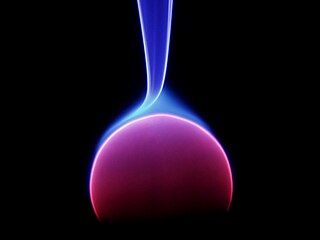This is an index of energy articles.
This is an index of energy articles.
Activation energy - Alternative energy - Alternative energy indexes - American Museum of Science and Energy (AMSE) - Anisotropy energy - Atomic energy
Binding energy - Bioenergy - Black hole - Breeder reactor - Brown energy
Characteristic energy - Conservation of energy - Consol Energy
Dark energy - Decay energy - Direct Energy - Dirichlet's energy - Dyson's sphere
- Ecological energetics - Electric Bond and Share Company - Electric potential energy - Electrochemical energy conversion - Embodied energy - Encircled energy - Energy - Energy accidents - Energy accounting - Energy amplifier - Energy applications of nanotechnology - Energy balance (biology) - Energy bar - Energy barrier - Energy being - Energy carrier - Energy Catalyzer - Energy cell - Energy charge - Energy conservation - Energy conversion efficiency - Energy crop - Energy current - Energy density - Energy-depth relationship in a rectangular channel - Energy development - Energy-dispersive X-ray spectroscopy - Energy distance - Energy drift - Energy drink - Energy efficiency gap - Energy-Efficient Ethernet - Energy-efficient landscaping - Energy elasticity - Energy engineering - Energy (esotericism) - Energy expenditure - Energy factor - Energy field disturbance - Energy filtered transmission electron microscopy - Energy transfer - Energy flow (ecology) - Energy flux - Energy forestry - Energy functional - Energy gel - Energy harvesting - Energy independence - Energy input labeling - Energy landscape - Energy level - Energy level splitting - Energy management software - Energy management system - Energy–maneuverability theory - Energy Manufacturing Co. Inc - Energy medicine - Energy–momentum relation - Energy monitoring and targeting - Energy Probe - Energy profile (chemistry) - Energy quality - Energy recovery ventilation - Energy security - Energy (signal processing) - Energy Slave - Energy Star - Energy statistics - Energy Storage Challenge - Energy storage - Energy system - Energy technology - Energy tower (downdraft) - Energy transfer - Energy transfer upconversion - Energy transformation - Energy value of coal - Energy vortex (stargate) - Enthalpy - Entropy - Equipartition theorem - E-statistic - Exertion
Geothermal energy - Gravitational energy - Gravitational potential
Interaction energy - Intermittent energy source - Internal energy - Invariant mass - Ionization energy
Magnetic confinement fusion - Marine energy - Mass–energy equivalence - Mechanical energy - Möbius energy - Muzzle energy
Negative energy - Nuclear fusion - Nuclear power - Nuclear reactor
Photosynthesis - Potential energy - Power (physics) - Primary energy
Seismic scale - Solar energy - Solar thermal energy - Sound energy - Specific energy - Specific kinetic energy - Specific orbital energy - Surface energy
Thermodynamic free energy - Threshold energy - Tidal power - Turbulence kinetic energy
Watt meter - Work (physics) - World energy resources and consumption - World Forum on Energy Regulation
Zero-energy building - Zero-energy universe - Zero-point energy

In physics, energy is the quantitative property that is transferred to a body or to a physical system, recognizable in the performance of work and in the form of heat and light. Energy is a conserved quantity—the law of conservation of energy states that energy can be converted in form, but not created or destroyed. The unit of measurement for energy in the International System of Units (SI) is the joule (J).

Nuclear fusion is a reaction in which two or more atomic nuclei are combined to form one or more different atomic nuclei and subatomic particles. The difference in mass between the reactants and products is manifested as either the release or absorption of energy. This difference in mass arises due to the difference in nuclear binding energy between the atomic nuclei before and after the reaction. Nuclear fusion is the process that powers active or main-sequence stars and other high-magnitude stars, where large amounts of energy are released.

In physics, potential energy is the energy held by an object because of its position relative to other objects, stresses within itself, its electric charge, or other factors. The term potential energy was introduced by the 19th-century Scottish engineer and physicist William Rankine, although it has links to the ancient Greek philosopher Aristotle's concept of potentiality.

Spacecraft propulsion is any method used to accelerate spacecraft and artificial satellites. In-space propulsion exclusively deals with propulsion systems used in the vacuum of space and should not be confused with space launch or atmospheric entry.

A nuclear thermal rocket (NTR) is a type of thermal rocket where the heat from a nuclear reaction, often nuclear fission, replaces the chemical energy of the propellants in a chemical rocket. In an NTR, a working fluid, usually liquid hydrogen, is heated to a high temperature in a nuclear reactor and then expands through a rocket nozzle to create thrust. The external nuclear heat source theoretically allows a higher effective exhaust velocity and is expected to double or triple payload capacity compared to chemical propellants that store energy internally.
In a traditional nuclear photonic rocket, an onboard nuclear reactor would generate such high temperatures that the blackbody radiation from the reactor would provide significant thrust. The disadvantage is that it takes much power to generate a small amount of thrust this way, so acceleration is very low. The photon radiators would most likely be constructed using graphite or tungsten. Photonic rockets are technologically feasible, but rather impractical with current technology based on an onboard nuclear power source.

A fusion rocket is a theoretical design for a rocket driven by fusion propulsion that could provide efficient and sustained acceleration in space without the need to carry a large fuel supply. The design requires fusion power technology beyond current capabilities, and much larger and more complex rockets.

An antimatter rocket is a proposed class of rockets that use antimatter as their power source. There are several designs that attempt to accomplish this goal. The advantage to this class of rocket is that a large fraction of the rest mass of a matter/antimatter mixture may be converted to energy, allowing antimatter rockets to have a far higher energy density and specific impulse than any other proposed class of rocket.
Muon-catalyzed fusion is a process allowing nuclear fusion to take place at temperatures significantly lower than the temperatures required for thermonuclear fusion, even at room temperature or lower. It is one of the few known ways of catalyzing nuclear fusion reactions.

In physics, mass–energy equivalence is the relationship between mass and energy in a system's rest frame, where the two quantities differ only by a multiplicative constant and the units of measurement. The principle is described by the physicist Albert Einstein's famous formula: . In a reference frame where the system is moving, its relativistic energy and relativistic mass obey the same formula.

Energy development is the field of activities focused on obtaining sources of energy from natural resources. These activities include production of renewable, nuclear, and fossil fuel derived sources of energy, and for the recovery and reuse of energy that would otherwise be wasted. Energy conservation and efficiency measures reduce the demand for energy development, and can have benefits to society with improvements to environmental issues.
Elastic scattering is a form of particle scattering in scattering theory, nuclear physics and particle physics. In this process, the kinetic energy of a particle is conserved in the center-of-mass frame, but its direction of propagation is modified meaning the two particles in the collision do not lose energy. Furthermore, while the particle's kinetic energy in the center-of-mass frame is constant, its energy in the lab frame is not. Generally, elastic scattering describes a process in which the total kinetic energy of the system is conserved. During elastic scattering of high-energy subatomic particles, linear energy transfer (LET) takes place until the incident particle's energy and speed has been reduced to the same as its surroundings, at which point the particle is "stopped".

Energy transformation, also known as energy conversion, is the process of changing energy from one form to another. In physics, energy is a quantity that provides the capacity to perform work or moving, or provides heat. In addition to being converted, according to the law of conservation of energy, energy is transferable to a different location or object, but it cannot be created or destroyed.
In physics, energy density is the amount of energy stored in a given system or region of space per unit volume. It is sometimes confused with energy per unit mass which is properly called specific energy or gravimetric energy density.
The following outline is provided as an overview of and topical guide to energy:

In astronautics, a powered flyby, or Oberth maneuver, is a maneuver in which a spacecraft falls into a gravitational well and then uses its engines to further accelerate as it is falling, thereby achieving additional speed. The resulting maneuver is a more efficient way to gain kinetic energy than applying the same impulse outside of a gravitational well. The gain in efficiency is explained by the Oberth effect, wherein the use of a reaction engine at higher speeds generates a greater change in mechanical energy than its use at lower speeds. In practical terms, this means that the most energy-efficient method for a spacecraft to burn its fuel is at the lowest possible orbital periapsis, when its orbital velocity is greatest. In some cases, it is even worth spending fuel on slowing the spacecraft into a gravity well to take advantage of the efficiencies of the Oberth effect. The maneuver and effect are named after the person who first described them in 1927, Hermann Oberth, an Austro-Hungarian-born German physicist and a founder of modern rocketry.
A pressurized heavy-water reactor (PHWR) is a nuclear reactor that uses heavy water (deuterium oxide D2O) as its coolant and neutron moderator. PHWRs frequently use natural uranium as fuel, but sometimes also use very low enriched uranium. The heavy water coolant is kept under pressure to avoid boiling, allowing it to reach higher temperature (mostly) without forming steam bubbles, exactly as for pressurized water reactor. While heavy water is very expensive to isolate from ordinary water (often referred to as light water in contrast to heavy water), its low absorption of neutrons greatly increases the neutron economy of the reactor, avoiding the need for enriched fuel. The high cost of the heavy water is offset by the lowered cost of using natural uranium and/or alternative fuel cycles. As of the beginning of 2001, 31 PHWRs were in operation, having a total capacity of 16.5 GW(e), representing roughly 7.76% by number and 4.7% by generating capacity of all current operating reactors.
This glossary of physics is a list of definitions of terms and concepts relevant to physics, its sub-disciplines, and related fields, including mechanics, materials science, nuclear physics, particle physics, and thermodynamics. For more inclusive glossaries concerning related fields of science and technology, see Glossary of chemistry terms, Glossary of astronomy, Glossary of areas of mathematics, and Glossary of engineering.
Direct energy conversion (DEC) or simply direct conversion converts a charged particle's kinetic energy into a voltage. It is a scheme for power extraction from nuclear fusion.